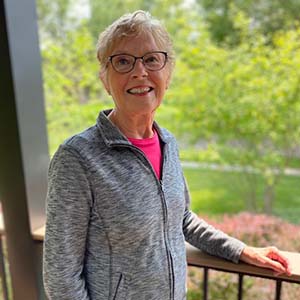
Let’s Talk Osteoporosis: How to Keep Your Bones Strong
It might seem hard to believe but we reach our peak bone mass in our late 20s or early 30s. From there, men and women start to lose some amount of bone density throughout their lifetime. The loss in bone density causes an abnormal structure and ultimately weakens our bones, increasing the chance of osteoporosis and a bone fracture.
What Is Osteoporosis?
Osteoporosis is the loss of density or mass within our bones.
To illustrate, picture a healthy bone as a honeycomb and then put a bone with osteoporosis next to it. The bone with osteoporosis will have much larger holes than the healthy bone.
Osteoporosis affects all of our bones. But the ones most likely to fracture due to osteoporosis are in your spine, wrist, shoulder and hips.
Most Common Osteoporosis Risk Factors
There are many risk factors that can lead to osteoporosis.
- More common in women
- 50+ years old
- Post-menopausal
- Caucasian
- Low body weight
- Undergoing chemotherapy for cancer treatment
- Certain diabetes and seizure medications, and some medications that cause immunosuppression
- Current or previous use of tobacco/nicotine products
Ways You Can Slow Bone Density Loss
Here are some ways you can help your bones stay strong and slow bone loss.
- Avoid drinking alcohol/drink alcohol in moderation
- Alcohol affects your nutrition level, which can mean your bones don’t get the adequate nutrients to stay strong
- Avoid smoking
- Make sure you get the right amount of vitamin D and calcium
- Stay active
- Weight-bearing and strengthening exercises at least three to four times a week
Screenings to Diagnose Osteoporosis
Screenings for osteoporosis risks include a FRAX score and DEXA scan.
FRAX Score
This screening should be done when you reach menopause. It involves reviewing risk factors and answering a series of questions with your provider. With this information, your provider can determine your FRAX score. This will help to understand your chance of having a fracture within the next 10 years.
DEXA Scan
This screening typically begins at age 65, unless your FRAX score is higher than the recommended level. A DEXA scan tells us the quantity or amount of bone. It’s a bone mineral density test. The DEXA scan looks at the bone density of your lumbar spine, and then usually at a hip or wrist or forearm. It’s noninvasive, similar to having an x-ray.
Possible DEXA scan results:
- Normal, meaning you don’t have osteoporosis.
- Osteopenia, meaning your bone density is in between normal and osteoporosis.
- Osteoporosis, meaning your bone density has reached the level to be diagnosed with osteoporosis.
Based on the results, DEXA scans may be repeated every couple of years to monitor your bone density.
Treatment & Prevention of Osteoporosis
Medication to Treat
Medications typically are not started until you are diagnosed with osteoporosis. The exception to this would be if you have osteopenia and have a fragility fracture. A fragility fracture is a fracture from a fall at standing height or less. It can be both a sign and a symptom of osteoporosis.
Diet & Exercise to Prevent & Treat
It’s really important to make sure you have a well-balanced healthy diet and are getting enough protein, calcium and vitamin D. Most of our vitamin D comes from the sun, so in the fall and winter months, a vitamin D supplement may be beneficial. It is possible to get too much of these vitamins, so it is important to talk to your health care provider to make sure you’re taking the correct amount.
Staying active is also important. Exercise, walking and generally taking care of our bodies helps not only to slow our bone loss down, but also helps us to prevent falls.

Megan Simpson, APRN-NP
Bryan Primary Care
I believe in a collaborative approach to care, and want to create a partnership with my patients. It’s important to me to provide each patient with the knowledge they need to make decisions that are best for them and their health.
I’m here for my patients – to listen to you and your concerns and answer questions you have at the office or after you go home.
Care for:
- Toddlers age 2 and older
- Children, teens and adults of all ages
- Preventative care, wellness checks and screenings
- Chronic conditions like high blood pressure and diabetes
It’s a privilege for me to help people of all ages live their best lives.



































